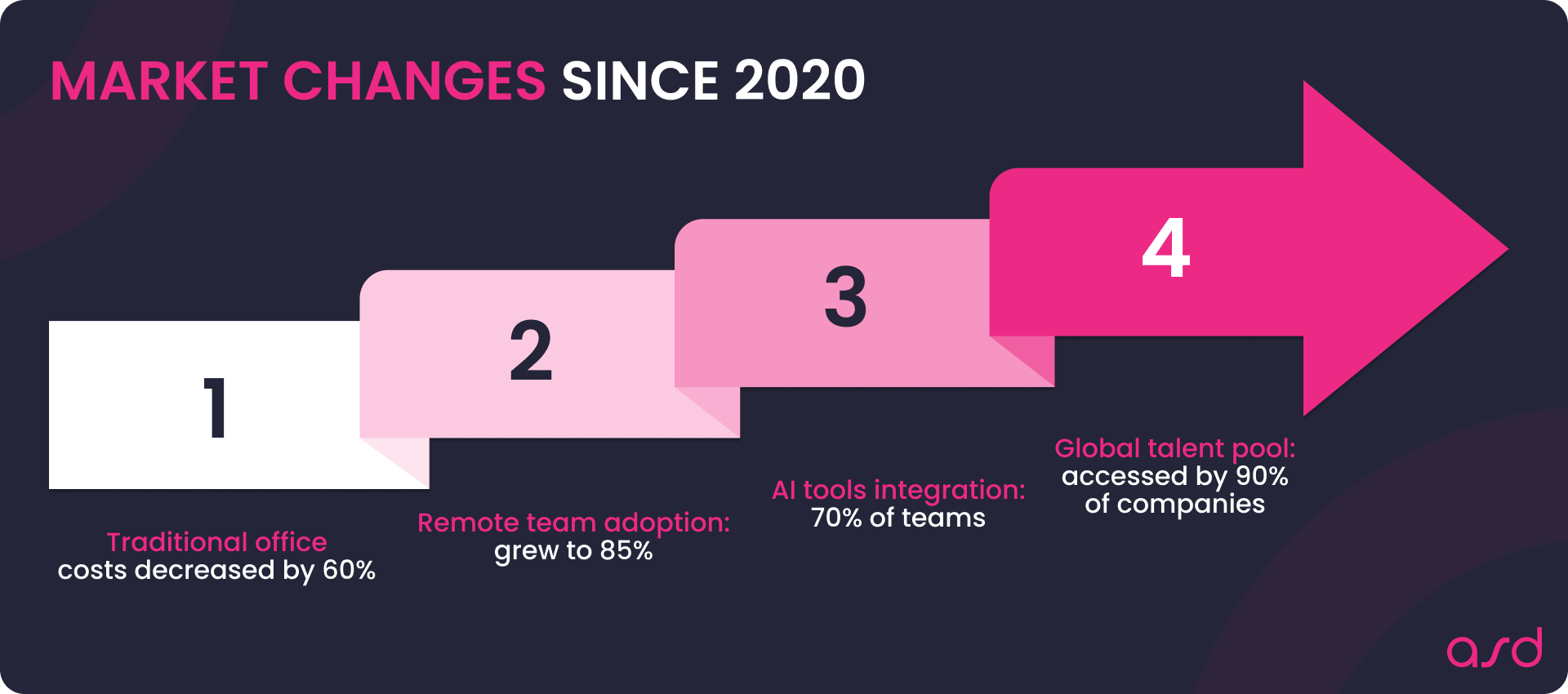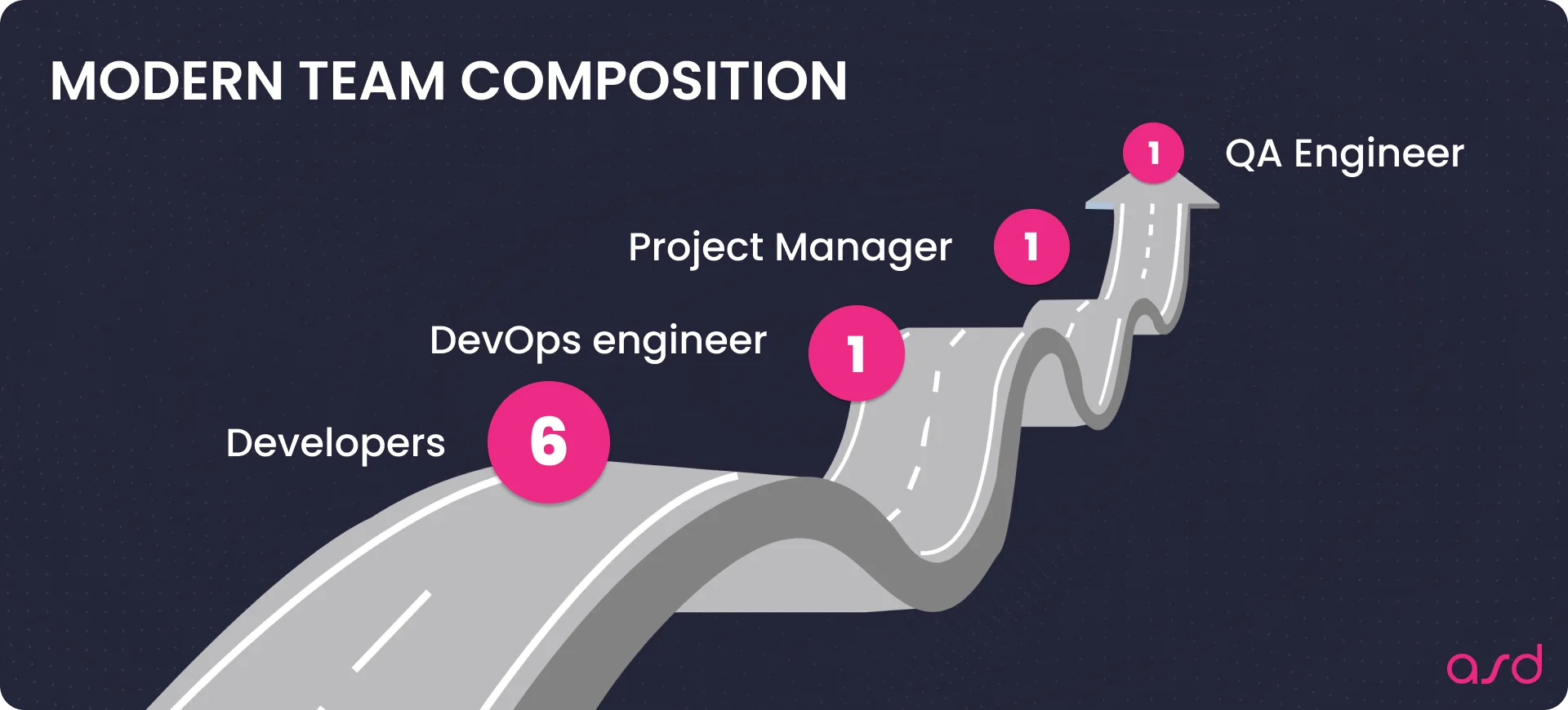Table of Content
- The Evolution of Software Development Costs
- Software Development Cost Estimates
- The Human Factor in Software Development Cost Estimations
- Additional Considerations: Cost Estimate for Software Development
- How Technologies Influence Software Development Cost
- The Importance of Post-Launch Support
Free cost estimation for your project
Book a callSo, one day you are sitting in a coffee shop, sketching your next big idea on a napkin. Maybe it’s a revolutionary AI-powered travel app, travel API, a booking widget, OTA software, or the next big social platform. The question inevitably hits you: “How much is this going to cost?” In 2026, this question has become both simpler and more complex than ever before. Understanding how to estimate software development costs and uncovering what makes up the total cost estimate for software development can help you navigate this process effectively.
The Evolution of Software Development Costs: 2020-2026
Remember when we thought remote work was temporary, and all of the COVID-19 influence on the work field would vanish in 2 weeks? Now, in 2026, all office-focused jobs have already been reshaped to remote software development teams. Traditional teams have given way to globally distributed powerhouses, fundamentally changing how we calculate software development costs. Today, the process of estimating software development costs includes more than salaries and tools — it’s about adapting to global trends, like the integration of AI and remote collaboration models. Companies now prioritize scalability, security, and long-term value in their cost considerations.

Software Development Cost Estimates in 2026
1. Development Team Models and Their Costs
In-house Development
The base numbers tell only part of the story:
- UK developers (£45,000-£90,000)
- Project managers/QA (£55,000-£75,000)
- Total monthly cost: £220,000-£350,000
But here’s what’s really interesting: In 2026, the most successful in-house teams aren’t just development units — they’re innovation hubs. Understanding how much custom software development costs for an in-house team depends on several factors. Let’s break down a typical modern in-house team’s cost structure:
Base Costs:
- Core development team salaries
- Management and QA salaries
- Office space (hybrid model)
- Equipment and software licenses
Modern Additions:
- AI tool subscriptions (£5,000-£15,000/month)
- Cloud infrastructure (£10,000-£30,000/month)
- Continuous learning programs (£2,000/employee/year)
- Mental health and wellness benefits (£500/employee/month)
Real-World Example: Imagine you’re building a medium-sized e-commerce platform. In 2023, you might have needed 10 developers. In 2026, you might need:
6 developers
- 6 developers
- 1 DevOps engineer
- 1 Project Manager
- 1 QA engineer

With this streamlined setup, the cost of developing a software solution becomes more efficient, leveraging AI for increased productivity and reduced team sizes while maintaining quality. But the question remains the same: in-house development vs outsourcing? Let`s now take a look at outsourcing options.
Outsourcing Options
The global development landscape has evolved dramatically:
Western Europe: $60-$120/hour
- Specializes in high-end enterprise solutions
- Strong focus on AI integration
- Excellent for complex financial and healthcare systems
Eastern Europe: $35-$65/hour
- Sweet spot for cost/quality ratio
- Strong technical education system
- Growing AI/ML capabilities
US Rates: $130,000-$225,000/year
- Leading in innovative solutions
- Strong startup ecosystem
- Premium rates for premium expertise
- AI Integration Specialists: Additional $20-$40/hour
- The new must-have team member
- Focuses on optimization and automation
- Rapidly becoming a standard requirement
When deciding how much software costs to develop, it’s essential to weigh the benefits of different outsourcing locations and consider adding AI specialists to the team for future-proofing. And of course, it is undeniable that cost will also be determined by the fact of who your software development partner is.
Discover how you can benefit from Outsourcing Software Development to Ukraine
2. Collaboration Models and Cost Implications
The Fixed-Price Renaissance
Fixed-price projects have evolved in 2026. They’re no longer rigid constructs but flexible frameworks powered by AI-driven estimation tools. Fixed-price models are now suitable for businesses aiming for predictable costs and outcomes, especially when considering how to estimate the cost of software development with precision.
Success Story: A fintech startup recently completed a mobile banking app development project under a fixed-price model. The key to their success? AI-powered scope analysis tools that predicted potential challenges before they arose, leading to a more accurate initial estimate and fewer change requests.
Cost Breakdown Example:
- Initial development: $150,000
- AI integration: $50,000
- Testing and QA: $30,000
- Buffer for changes: $20,000
- Total: $250,000
Time and Materials: The Agile Choice
The time and materials model has become more sophisticated in 2026, with real-time tracking and AI-powered optimization. This model is ideal for projects with evolving requirements, as it allows flexibility to adjust costs based on progress.
Real-Time Tracking Features:
- AI-powered time prediction
- Automated cost optimization suggestions
- Resource allocation recommendations
- Performance metrics analysis
For businesses wondering how much custom software development costs under a time and materials model, this approach can provide transparency and adaptability.
The Human Factor in Software Development Cost Estimations
In 2026, successful software development isn’t just about technical expertise — it’s about understanding the human elements that drive success, including expertise and capabilities that are supreme to AI or an in-house team.
Team Dynamics and Productivity
The most successful projects we’ve seen in 2026 share a common thread: they balance technical excellence with human factors:
- Regular team wellness checks
- AI-assisted workload distribution
- Cultural alignment programs
- Continuous learning initiatives
- The Hidden Value of Experience
While junior developers might cost less per hour, experienced developers bring value that’s harder to quantify but impossible to ignore:
- Problem prevention vs. problem-solving
- Architectural decisions that save future costs
- Mentorship that elevates team performance
Business understanding that aligns technical solutions with objectives
The True Cost of Quality in Software Development
As we navigate through 2026, the question isn’t just “How much does it cost to develop software?” but rather “How much should we invest to create lasting value?” The most successful projects we’ve seen share these characteristics:
- They embrace AI without forgetting the human element
- They focus on long-term sustainability over short-term savings
- They invest in quality and security from day one
- They build for scalability and future adaptation
Looking for a reliable dev team for your project?
Additional Considerations: Cost Estimate for Software Development
Scalability and Maintenance
Developing software in 2026 means planning for future growth. This includes incorporating scalability into the architecture, enabling the software to handle increased user loads and new features without significant redevelopment costs. A cost estimate for software development must also account for long-term maintenance, ensuring the product remains functional and secure over time.
Security and Compliance
With increasing cyber threats, security is a non-negotiable aspect of software development. Compliance with data protection regulations like GDPR or HIPAA adds another layer of complexity and cost. Investing in robust security measures from the outset can save significant expenses related to breaches or non-compliance fines.
Customization vs. Off-the-Shelf Solutions
While off-the-shelf solutions may appear cost-effective initially, they often fall short when it comes to meeting unique business requirements. Custom software development, though more expensive upfront, provides tailored functionality and scalability, delivering better ROI in the long run.

AI and Automation Integration
The integration of AI and automation tools can significantly reduce manual effort, improve accuracy, and enhance user experiences. Whether it’s AI-driven chatbots, generative AI in travel industry, recommendation engines, or predictive analytics, these features add value but also influence the overall cost estimate for software development.
Enhancing Team Productivity with Advanced Tools
Modern software development thrives on advanced tools that automate processes and enhance team productivity. Platforms like Jira and Asana now integrate AI for intelligent task allocation and performance tracking. Continuous integration tools such as Jenkins streamline workflows, while advanced code analysis tools like SonarQube help identify vulnerabilities and inefficiencies in real-time. These tools, while adding upfront costs, offer immense value in reducing errors, improving quality, and speeding up project timelines.
The Role of Design in Software Development Costs
Design has become a cornerstone of successful software products. A well-designed user interface (UI) and user experience (UX) can significantly impact a product’s adoption rate and overall success. Investing in experienced designers and advanced prototyping tools can elevate your software, making it more user-friendly and competitive in the market. The cost of design, though often underestimated, is a critical component of the total software development expense.
How Technologies Influence Software Development Cost
In 2026, emerging technologies like blockchain, augmented reality (AR), and quantum computing are shaping the software landscape. While integrating these technologies can increase development costs, they also offer innovative solutions and competitive advantages. For example:
- Blockchain enhances security and transparency in financial and supply chain applications.
- AR revolutionizes industries like retail, education, and healthcare with immersive experiences.
- Quantum computing accelerates complex problem-solving for research and analytics.
Considering these technologies in your software development plan can position your business at the forefront of innovation.
The Importance of Post-Launch Support
Software development doesn’t end with deployment — it’s only the beginning of the product’s lifecycle. Post-launch support ensures that your software remains functional, secure, and relevant in an ever-evolving digital environment. This vital phase can make or break the success of your software product, influencing customer satisfaction, user retention, and long-term ROI.
Key Aspects of Post-Launch Support:
- Regular Updates:
- Continuous updates to fix bugs and address compatibility issues.
- Adding new features based on user needs or market trends.
- Performance Monitoring:
- Using analytics tools to monitor software performance.
- Identifying and resolving bottlenecks in real-time.
- Security Patching:
- Addressing vulnerabilities promptly to protect user data.
- Keeping up with the latest cybersecurity standards.
- User Feedback Analysis:
- Collecting and analyzing user feedback to identify improvement areas.
- Building a roadmap for future enhancements.
- Scalability Adjustments:
- Ensuring the software scales with growing user demands.
- Adapting the architecture for new integrations or markets.
- Customer Support:
- Offering reliable customer support to resolve issues quickly.
- Training users to maximize software adoption and utility.
Budgeting for Post-Launch Support:
Allocating a significant portion of your budget to post-launch support is essential. A common approach is to dedicate 15-20% of the initial development budget annually to maintenance and enhancements. This investment ensures that your product remains competitive and aligns with evolving user expectations.
Real-World Example:
Consider a SaaS company that launched a project management tool. They dedicated a dedicated team to post-launch support, resulting in:
- A 25% increase in user retention within a year.
- Positive reviews highlighting excellent customer service and reliable updates.
- Rapidly addressing market demands for integrations with other tools, boosting new user acquisition.
Post-launch support isn’t just an added expense — it’s a strategic investment that sustains your software’s relevance and profitability in the long term.
Ready to elevate your project? Hire a dedicated development team and forget about the stresses of missing deadlines or unmatched results. Book a free consultation

Building a Sustainable Software Development Process From Estimate to Release
Sustainability is increasingly becoming a priority in software development. This involves adopting practices that minimize environmental impact, such as optimizing energy consumption in data centers and using sustainable coding practices. While these measures may slightly increase initial costs, they contribute to a more sustainable and socially responsible development process, aligning with the values of modern consumers and businesses.
In conclusion, determining how much it costs to develop software in 2026 involves a multifaceted approach. By understanding the nuances of team models, collaboration methods, and additional considerations, businesses can make informed decisions that balance cost, quality, and long-term value. With the integration of emerging technologies, advanced tools, and sustainable practices, the software development landscape continues to evolve, offering exciting opportunities for innovation and growth.
Questions? Answers!
How accurate are software project cost estimates?
Estimates offer a reliable ballpark figure based on similar past projects and market conditions. While they may not be 100% precise, they serve as a helpful guide for budgeting and planning.
What factors influence software development cost estimates?
Cost estimates depend on factors such as project scope, complexity, feature set, team expertise, and development location. Larger and more complex projects generally lead to higher estimates.
Can you estimate the cost of my software project idea?
Yes, we can provide a free estimate based on the scope, complexity, and desired features. For a more accurate estimate, we would need a detailed project breakdown, including the technology stack, team size, and timeline.
How much does it cost to develop custom software in 2026?
Custom software costs range from $10,000 for small projects to over $1,000,000 for large-scale solutions, depending on complexity, team structure, and features. Use our test for free project estimation: Start the quiz now.
What factors affect software development costs?
Costs depend on team type, project complexity, technology stack, post-launch support, and development location.
How does AI impact software development costs?
AI lowers costs by automating tasks but increases expenses when integrated into your product. It boosts efficiency and functionality long-term.



